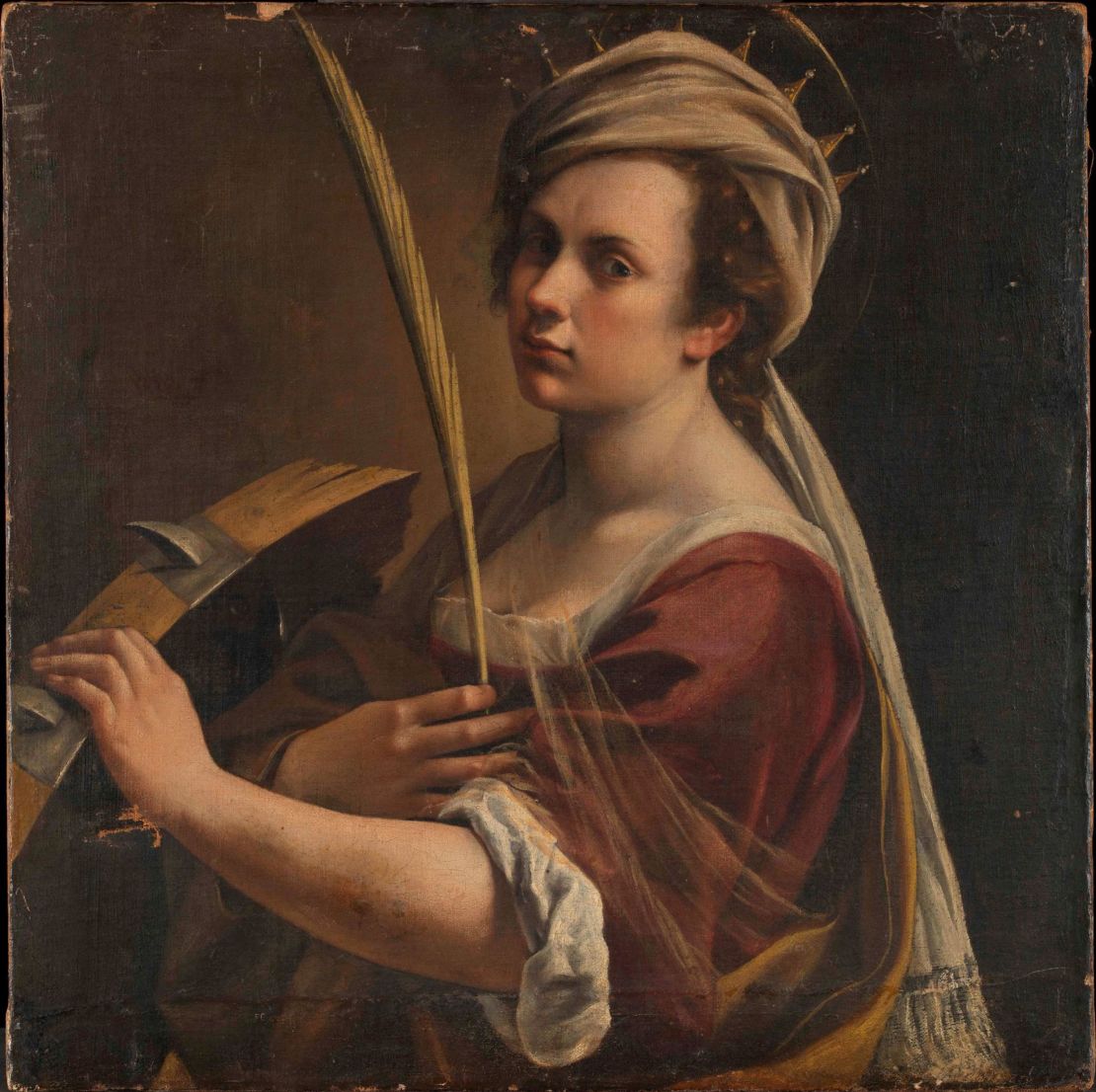While works of art by Old Masters like Leonardo Da Vinci, Michelangelo and Titian continue to headline auctions and exhibition around the world, their female counter parts are still largely unknown outside art historical circles.
But next year, Sotheby’s will try to raise the profile of a select few – if only within the world or high-net-worth collectors and art institutions – with the first auction dedicated to female artists from the 16th to 19th centuries, the auction house revealed to CNN.
“The Female Triumphant Sale,” scheduled to run at the end of January during the auction house’s Masters Week in New York, will include paintings from Milanese baroque painter Fede Galizia, Neoclassical painter Angelika Kauffmann and French portraitist Elisabeth Louise Vigée Le Brun among others. The works will be exhibited and marketed together but sold separately as part of three larger sales.
With this effort, which is still in the planning stage, Sotheby’s will draw attention to the centuries-old gender disparity that has manifested in both art institutions and the marketplace – including in Sotheby’s own showrooms.
The proof is in the numbers: This year, the house has sold only 14 works by female Old Masters last year, compared to 1,100 by men. But Calvine Harvey, a specialist in Sotheby’s Old Master paintings department, says this gap could shrink if female artists achieve more notoriety.

“Over the last few years, we’ve started to see works by female artists really garner extra excitement and enthusiasm, and we’ve seen some records being broken and major institutions buying at the higher level,” she said in a phone interview. “I think it’s been pretty obvious in the larger world that this is a moment to be looking at women and women’s equality.”
Indeed, the so-called female Old Masters have been enjoying a renaissance of their own, with the world’s most respected museums belated paying homage to artists few have heard of outside of an art historical context.
Two years ago, Madrid’s Museo del Prado reaped both praise and surprise when it hosted its first solo exhibition dedicated to a female artist, Flemish Baroque still-life painter Clara Peeters; and in 2019, the museum will dedicate a show to Sofonisba Anguissola, a court painter for King Phillip II of Spain, and Lavinia Fontana, who is considered the first professional female artist.
Le Brun, Belgian painter Michaelina Wautier and 17th-century painter Artemisia Gentileschi, the best-known female painter of the period, have also been the subjects of major exhibitions in recent years.

And yet these belated accolades often serve to further highlight the historic inequalities they’re meant to address. In July, London’s National Gallery made headlines when it announced it had purchased Gentileschi’s “Self-Portrait as Saint Catherine of Alexandria” for £3.6 million ($4.6 million), but many were stunned to discover the painting was one of only 21 by a woman in the museum’s collection of more than 2,300 European paintings.
Harvey said this institutional erasure of female Old Masters is largely the product of specific forms of gender discrimination that made it all but impossible for women to train and make names for themselves as artists. France’s prestigious Académie Royale de Peinture et de Sculpture and London’s Royal Academy of Art, for example, had long barred women from taking the life-drawing classes where men homed their skills; and in the Netherlands, women were often excluded from professional artists’ guilds.
“There were all these barriers that were set up for them that really made it difficult. So, a lot of the women artists who did succeed tended to have a father who was in the art world of a relative or someone like that so that they were able to train in their homes from a young age,” Harvey explained. “The women were prevented from getting major commissions, from big religious compositions or altarpieces or things like that. Those would all (go to) their male counterparts.”

This explains why, today, even an institution like Sotheby’s can struggle to name, let alone gather, enough works by female artists from the period to fill an auction. Harvey says the final catalog is still being finalized, but she anticipates they’ll end up including between 15 and 20 works.
“In the Old Masters market, ultimately, works by a female artist are a real rarity. There are some artists where that drives up their prices, but there are some where it doesn’t necessarily because (the artists) don’t have that household recognition, and if people are buying for big names – some people do, some people don’t – it’s not a big name,” Harvey said. But she’s hopeful that this can change.
“This sale is something that, for us, is a way to try to get those names out there in the marketplace: Find these women who we haven’t seen at auction before or have gone under the radar and bring them to light.”
Top image: Detail of “Portrait Of Lady Georgiana Spencer, Henrietta Spencer And George Viscount Althorp” (c.1770) by Angelika Kauffmann
